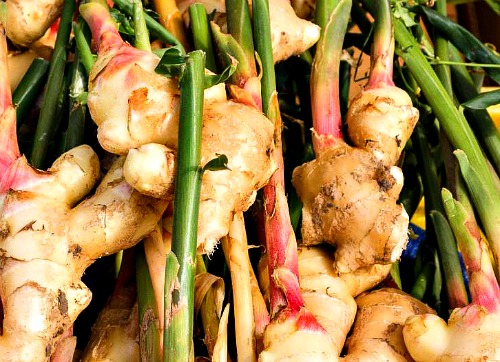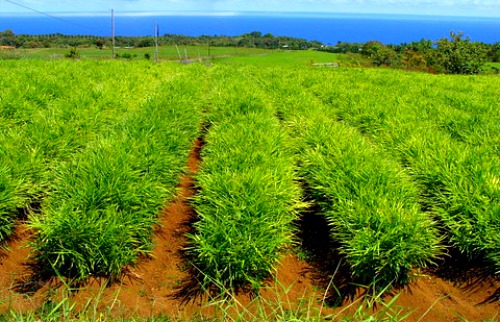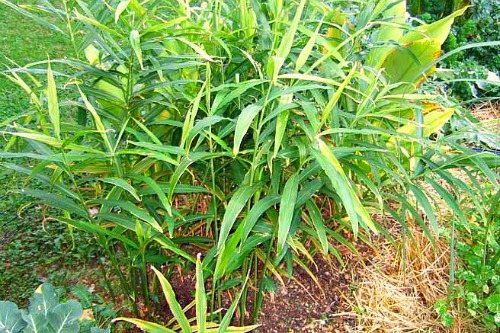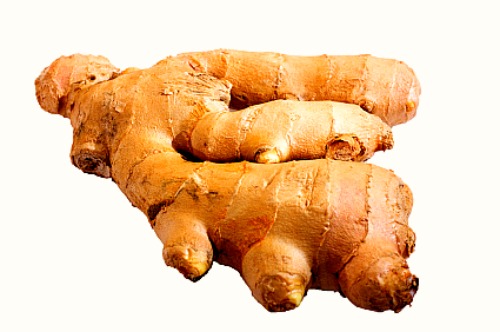How to Grow Ginger in Uganda
...or you're just a farming enthusiast wishing to try out Ginger planting in your backyard and are now online for tips on how to plant ginger?
Well, the good news is; you don't have to start from scratch...!
Ginger is known by the scientific name is Zingiber Officinale and in Luganda it is called Entangawuzi.
This Uganda plant has a long history of use for relieving digestive problems such as nausea, loss of appetite, motion sickness and pain. The root or underground stem (rhizome) of the ginger plant can be consumed fresh, powdered, dried as a spice, in oil form or as juice.
Regarding the local market, Ginger is highly demanded here in Uganda, Congo and the Southern Sudan.
The rhizome is mostly sought after for its characteristic Pungent and aromatic smell.
Ginger is grown in tropical and sub tropical regions of the world for its spice and medicinal value.
It’s a perennial herbaceous monocotyledon, usually grown as annual.
On this Uganda agribusiness guide you will find Tips and Techniques that will help you start a successful commercial scale ginger growing project in Africa.
We have included useful information about..:
- Ginger varieties in Uganda
- Soil requirements for Ginger
- How to propagate Ginger
- How to prepare land for planting Ginger
- How to plant Ginger in Uganda
- How to plant Ginger on a small plot of land
- How to mulch and how to control weeds
- How to apply Manure your Ginger plantation
- Ginger diseases to keep an eye on
- How to harvest Ginger in Africa
- Quick Tips for planting Ginger
- Where to buy Ginger Rhizomes for Seed, home consuption or for Industrial use
You also have the opportunity to Here about the Plant Guide about growing Ginger in Uganda.
Common Ginger varieties in Uganda
There are two common varieties like the land race with small rhizomes and the hybrid with big rhizomes.
Soil requirements for growing Ginger
Ginger has a wider adaptability for different soils, and for higher yields the soil should be loose, friable and offer minimum resistance to rhizome development.
Like most plants, ginger prefers mildly acidic soils. If soil is alkaline adjust it a pH between 6.1- 6.5 pH using a garden pH kit.
How to propagate Ginger
Ginger is propagated vegetatively from rhizome. Usually seed rhizomes with sprouts or buds are used in planting.
To prepare seeds for planting, you cut the rhizomes into pieces of 2.5-3.7cm with one eye or more.
How to prepare land for planting Ginger in Africa
Ginger can be planted in pots for home or direct to the field for commercial farmers.
Mix garden soil with an equal amount of well rotted compost, this should do you the trick.
Solarize beds and land before planting to remove pets and disease causing organisms.
How to plant Ginger in Uganda
Ginger planting should be done late in the dry season or early wet season in tropical countries like Uganda.
Make sure you select a spot where the plants get plenty of light but not direct sun, and protection from wind.
There two distinct methods of cultivation i.e., 3x1m beds are laid out at a distance of 30-45cm from each other and small shallow pits for planting are then made on the beds at required spacing. Then a handful of cattle manure is applied to each of these pits.
Planting can be done on ridges, a mixture of manure and soil is applied in the form of a 5cm thick ridge. In between the rows 20-25cm apart, seed rhizomes are placed at a required distance in rows and earthen up to make ridges 15-20cm high.
Then the field is given alight irrigation soon after sowing.
How to plant Ginger on a small plot of land
You will use the Dug Up Method to grow commercial scale Ginger on small portion of land.
Planting Ginger using the dug up method is simple and less time consuming.
This relatively new method requires just a little space of land but gives high returns.
Instead of using an acre of land to harvest One (1) ton of ginger you will only need to use well organized portions of land to get the same amount of ginger.
Under the dug up method you dig up holes in your garden that you feel with organic materials and animal waste. You then leave the organic material to rot in the hole to create a soft ground for the ginger to grow.
You have to protect your dug up holes from water logging, direct sunlight and strong winds until the ginger sprouts out.
You could harvest over 10,000 kilograms of ginger from holes you dig on just 1/4 acre of land.
You will NOT need a huge chunk of land to grow ginger on commercial scale with this dug up method
How to mulch and control weeds on your Ginger plantation
Mulching ginger with green leaves is essential to enhance germination of seed rhizomes, mulching also helps to controll weeds.
It helps to add organic matter and conserve moisture during later part of the cropping season.
Mulch again the plant on the 40th and 90th day after planting.
Use of lantana camara in mulching may reduce the infestation of shoot borer.
You will have to weed your ginger according to the intensity of weed growth.
How to apply Manure in your Ginger Garden
Application of well rotten cow dung or compost at 5-6 tones per hectare may be made as a basal dose while planting the rhizome in the pits.
Coffee husks are also good fertilizers for the ginger crop. An acre can take about 3 to 6 Lorries. The husks can be applied before planting. They are spread out evenly in the whole field and then covered with soils.
Phosphate is also another good fertilizer; an acre requires a supply of about 50kg. These are mixed in the soils at planting.
Ginger diseases to watch out for, in your garden
Watch out for Soft rot or rhizome rot. When selecting your planting area avoid water lodged areas because they predispose Ginger plants to infection.
The solarisation of soil you do at the time of bed preparation can reduce fungal infection.
Trichoderma a biocontrol agent against fungal diseases of plants could also be used to control fungal infections.
You can also carefully affected rhizomes from your garden.
Ginger harvesting and post harvest handlin in Africa
Ginger is ready for harvest in 8-10 months depending upon the maturity of the variety. When fully mature, leaves turn yellow and start drying up gradually untill thy drop off.
It’s during this stage that clumps of ginger are lifted carefully with a spade or digging fork.
Separate rhizomes from dried leaves, roots and adhering soil.
It is advisable to leave the crop unharvested for the first year and it sprouts again and is harvested at the second year. In this way, the yields increase.
The Ginger yield will depend on many factors; like fertility of the soils, supply of rains, and others but if all goes well, an acre can produce about 2 to 8 tons and a hectare could produce 15-25 tones using the convential planting methods.
Quick Tips for planting Ginger in Uganda
- Choose ginger roots that are plump and free of wrinkles, with visible eyes at the end of the fingers.
- Cut the rhizomes into pieces but should be with sanitized knife into pieces of 2.5-3.75 cm.
- After cutting, leave the pieces in dry location for a few days to allow them to heal (this enables them to form a protective collus over the cut surface which reduces the risk of infestation).
- Open up shallow pits for planting, if you are planting bigger sizes of rhizomes plant them 10 cm deep and for the small ones 5cm.
- Alternatively you can open up shallow trenches in rows, then place seed rhizomes at a required distance in rows and earthen up to make ridges 15-20cm high.
- Then give the field a light irrigation soon after sowing. Mulch to conserve the moisture.
- Harvest your ginger in 8-10 months after planting.







No comments:
Post a Comment